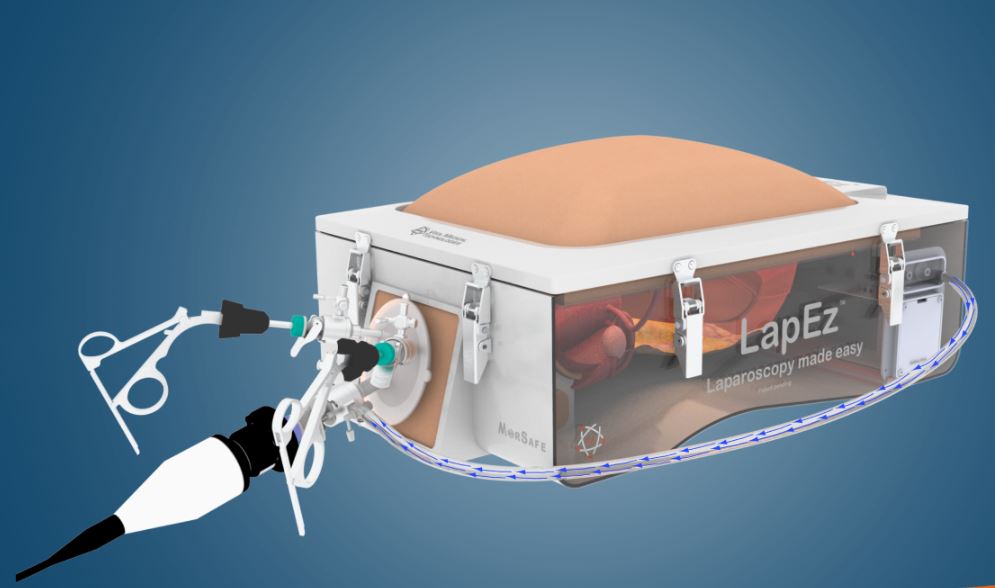In the evolving field of minimally invasive surgery, laparoscopic simulators have become an essential tool for training surgeons. These advanced simulation systems offer a safe and controlled environment for practicing laparoscopic techniques, helping medical professionals refine their skills before performing real surgeries. As patient safety becomes a top priority, laparoscopic simulators play a crucial role in reducing surgical errors, enhancing precision, and improving overall surgical outcomes.
The Importance of Precision in Laparoscopic Surgery
Laparoscopic surgery is a highly specialized technique that requires excellent hand-eye coordination, depth perception, and instrument control. Unlike traditional open surgeries, where surgeons have a direct view of the operative site, laparoscopy involves working with small incisions, long surgical instruments, and a camera to navigate inside the body.
Even minor errors in instrument movement or tissue handling can lead to complications such as bleeding, organ damage, or post-operative infections. To overcome these challenges, laparoscopic simulators provide a realistic training environment that allows surgeons to hone their skills, improve precision, and gain confidence before performing live procedures.
How Laparoscopic Simulators Improve Surgical Precision
-
Realistic Hands-on Training
Laparoscopic simulators replicate real-life surgical scenarios, allowing trainees to practice complex procedures in a risk-free environment. They provide an opportunity to develop critical skills such as:
- Instrument Handling: Simulators mimic the resistance and movement of tissues, helping surgeons learn the right amount of force to apply.
- Camera Navigation: Training on simulators helps improve hand-eye coordination when using a laparoscope.
- Tissue Manipulation: Surgeons can refine their ability to grasp, cut, and suture tissues with precision.
By repeatedly performing these tasks in a simulated setting, surgeons develop muscle memory, which significantly improves their accuracy and control during real operations.
-
Error Identification & Real-Time Feedback
One of the biggest advantages of laparoscopic simulators is their ability to provide instant feedback on a trainee’s performance. The system tracks:
- Instrument movement efficiency– Ensuring minimal tissue trauma
- Completion time of procedures– Helping surgeons work faster and more efficiently
- Errors such as excessive force or misplacement of instruments
This real-time feedback allows surgeons to identify and correct mistakes immediately, reducing the chances of repeating the same errors in a live surgical setting.
-
Enhancing Depth Perception & Hand-Eye Coordination
Laparoscopic surgery requires precise coordination between visual input and motor response. Unlike open surgery, where a surgeon has a direct three-dimensional (3D) view of the surgical site, laparoscopy involves working with a two-dimensional (2D) monitor, which can make depth perception challenging.
Laparoscopic simulators train surgeons to interpret visual cues effectively, improving their ability to judge distances, angles, and movements of surgical instruments. This enhanced coordination significantly reduces the chances of accidental tissue damage during real procedures.
-
Repetitive Practice Without Risk to Patients
One of the key benefits of using laparoscopic simulators is that they allow surgeons to practice as many times as needed without posing any risk to real patients. Unlike traditional training methods, where medical students often learn by observing senior surgeons, simulators provide an active learning approach.
- Beginner surgeons can practice basic techniques before advancing to more complex procedures.
- Experienced surgeons can refine their skills and adapt to new techniques or technologies.
- Simulated complications and emergency scenarios help surgeons prepare for real-life challenges.
By allowing unlimited practice opportunities, laparoscopic simulators help surgeons gain expertise faster while ensuring patient safety.
How Laparoscopic Simulators Reduce Surgical Errors
-
Preventing Common Laparoscopic Mistakes
Surgical errors in laparoscopy often arise due to:
- Poor hand-eye coordination
- Incorrect instrument angles
- Applying excessive force on tissues
- Delayed decision-making in emergencies
Laparoscopic simulators help trainees recognize and rectify these mistakes before they operate on real patients, thereby reducing complications in actual surgeries.
-
Standardizing Surgical Training
In traditional surgical training, the learning experience varies depending on the mentor, hospital resources, and case availability. However, laparoscopic simulators offer standardized training, ensuring that every surgeon receives the same high-quality practice before performing surgeries.
This consistency improves overall surgical proficiency and reduces variability in surgical outcomes.
-
Reducing Operation Time & Enhancing Efficiency
Studies have shown that surgeons trained on laparoscopic simulators complete procedures faster and with greater precision than those trained using traditional methods. This reduction in surgery time is crucial because:
- It minimizes the risk of prolonged anesthesia exposure for patients.
- It leads to shorter hospital stays and faster recovery.
- It improves overall surgical efficiency, allowing hospitals to treat more patients.
The Future of Laparoscopic Training
With advancements in virtual reality (VR) and artificial intelligence (AI), laparoscopic simulators are becoming even more sophisticated. Future simulators are expected to incorporate:
- AI-driven personalized feedback to tailor training based on a surgeon’s skill level.
- Haptic feedback technology provides realistic touch sensations.
- Virtual reality (VR) integration for a fully immersive training experience.
As technology continues to evolve, laparoscopic simulators will play an increasingly vital role in shaping the next generation of skilled surgeons.
Conclusion
Laparoscopic simulators are transforming the way surgeons are trained by enhancing precision, improving coordination, and reducing surgical errors. By providing realistic, hands-on experience in a risk-free environment, these simulators ensure that surgeons develop the expertise and confidence required to perform successful laparoscopic procedures.
As healthcare institutions continue to prioritize patient safety and surgical excellence, the adoption of laparoscopic simulators will remain a key driver in improving surgical outcomes worldwide.
- How Laparoscopic Simulators Improve Precision & Reduce Surgical Errors
- As healthcare institutions continue to prioritize patient safety and surgical excellence, the adoption of laparoscopic simulators will remain a key driver in improving surgical outcomes worldwide.
- medical devices, healthcare, laparoscopic surgery
Related posts:
 How to Lose Weight Fast Naturally and Permanently ?
How to Lose Weight Fast Naturally and Permanently ?
 Personalized Healing at Your Doorstep: Home Nursing Services in Faridabad
Personalized Healing at Your Doorstep: Home Nursing Services in Faridabad
 Exploring the Best Non – Surgical Treatments for Fibroids in Gurgaon
Exploring the Best Non – Surgical Treatments for Fibroids in Gurgaon
 Solutions for Intractable Pain Unresponsive to Conventional Therapies
Solutions for Intractable Pain Unresponsive to Conventional Therapies
 How Much Does Mole Removal Cost in Islamabad?Mole Removal Islamabad
How Much Does Mole Removal Cost in Islamabad?Mole Removal Islamabad
 Eight Key Things You Need to Know About Ultherapy Prime Today
Eight Key Things You Need to Know About Ultherapy Prime Today
 What You Should Know About Taking 125mcg Vitamin D3 Daily includes its potential to support immune function
What You Should Know About Taking 125mcg Vitamin D3 Daily includes its potential to support immune function
 Comprehensive Guide to IVF Treatment in Delhi at Sunrise Hospital
Comprehensive Guide to IVF Treatment in Delhi at Sunrise Hospital






